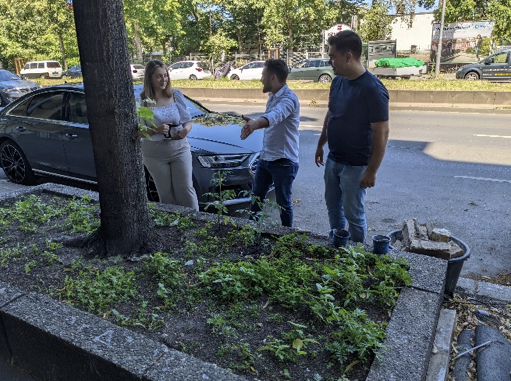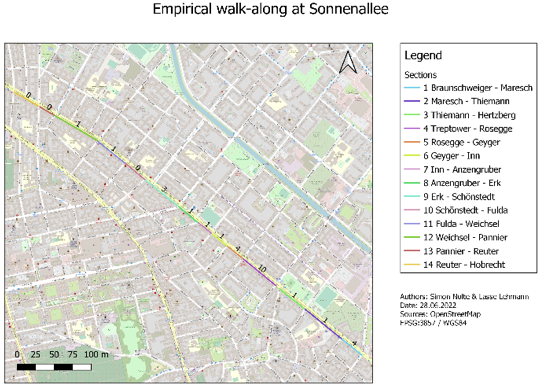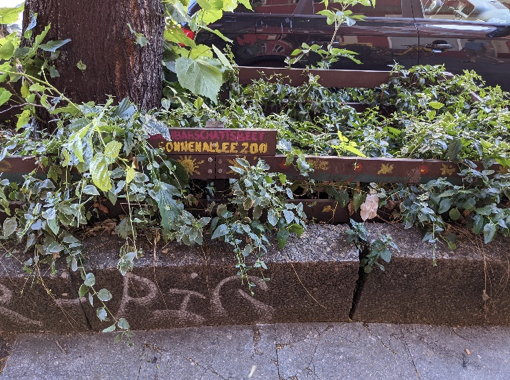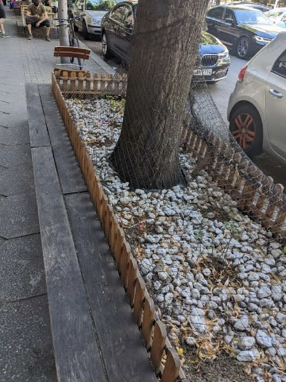For our research project, we looked at the distribution of urban gardening projects in Berlin and examined our research question “How are Urban Gardening projects distributed in the Berlin urban area and can patterns in the distribution be identified?”. During the first phase of our research, we quickly realised that urban gardening projects in Berlin are mostly organised privately and that there is no central database or similar, so we decided to investigate only a small part of the Berlin city area for the distribution of urban gardening projects and to identify possible patterns in the same time. Our choice for this project was the Sonnenallee in Berlin-Neukölln.
We wanted to know if and how many projects are realised by residents of the city along the street. We were also interested in whether there were differences in the number or type of projects at the beginning, middle or end of Sonnenallee.
All in all, we were able to find 25 urban gardening projects in the form of flowerbeds at the edge of the pavement (see the map on the right). Right at the beginning, we even met 3 people who were working on their beds at that moment:


Some of the beds were in good condition and you could see that they were taken care of. You could see that most likely residents of Sonnenallee or the neighbourhood took care of the beds, and also that the beds looked different from each another. On the left is a bed which is in good condition, while on the right there is a negative example:


Another result of our walk was that we found more beds at the beginning of the route than at the end. This could possibly be related to the fact that the type of development at the beginning of our route is different than in the middle or at the end of the route towards Hermannplatz. At the beginning, there are few businesses, but from the middle and to the end, there are many shops, restaurants and other businesses. Generally, there are more people on the road and it is a bit „busier“. So the pattern we found in this specific case is, that the number of beds decreased in direction north-Sonnenallee. There could now be many starting points for further research: for example, connections with socio-economic structures, housing density or similar. The scope of our undertaking was too small for that, but there is definitely potential for future research.


